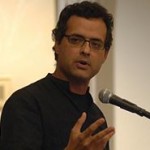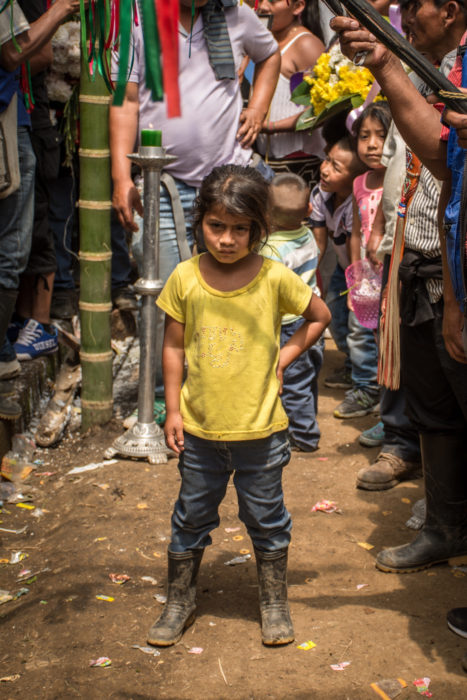If You Want Peace You Get War; If You Want War You Get Rich
Land in Colombia has been militarized to secure the profits of the elite, writes Vijay Prashad.
 A quarter
century ago, Victoria Sandino Palmera joined the Revolutionary Armed
Forces of Colombia – People’s Army (FARC-EP). She had previously been a
militant in the Communist Party and – when FARC-EP was above ground in
the 1990s – joined the Patriotic Pole. But the repression of what she
calls the “traditional oligarchy” sent her back to the jungle over and
over again. Victoria Sandino made it clear that she was not keen on this
war. “We didn’t take up weapons because we felt the need to use
violence,” she told me in 2015.
“We took up weapons because we tried to resolve the land question
through democratic means, which was violently responded to by the state.
Violence was imposed on us.”
A quarter
century ago, Victoria Sandino Palmera joined the Revolutionary Armed
Forces of Colombia – People’s Army (FARC-EP). She had previously been a
militant in the Communist Party and – when FARC-EP was above ground in
the 1990s – joined the Patriotic Pole. But the repression of what she
calls the “traditional oligarchy” sent her back to the jungle over and
over again. Victoria Sandino made it clear that she was not keen on this
war. “We didn’t take up weapons because we felt the need to use
violence,” she told me in 2015.
“We took up weapons because we tried to resolve the land question
through democratic means, which was violently responded to by the state.
Violence was imposed on us.”
The Historical Memory Group of the National Centre for Historical Memory, based in Bogotá, Colombia, calculates that
between Jan. 1, 1958, and Dec. 31, 2012, at least 220,000 people were
killed in the civil war. The landmark report by the National Centre for
Historical Memory notes that the root cause of this war has been the
“appropriation, use and possession of land.” This assessment stings:
“The sectors whose economic and political power have been based on land
have fraudulently opposed agrarian reforms as well as any effort to
democratise land ownership or to return what had been stolen. Both in
the past and present, they have used legal artifices as well as violent
methods, which have included assassinating the leaders and persecuting
the members of organisations of small farmers.” This is in agreement
with Victoria Sandino’s statement that violence was imposed on us.

“Why
does the government take away rights from native people and give them
to multinational corporations?” Mobilization in the Department of Cauca,
2013. (Marcha Patriótica’s communication team)
Our Dossier no. 23 (December
2019) is called “Peace, Neoliberalism, and Political Shifts in
Colombia.” It is prepared by the Group of Colombian Critical Thought at
the Institute for Latin American Studies at the Faculty of Social
Sciences at the University of Buenos Aires.
Peace Accords in Havana
In
2016, the belligerents to the civil war signed the Peace Accords in
Havana, which promised to open up a new period for the country. Victoria
Sandino was on the FARC-EP team that negotiated the accords. When I
asked her what she would do when peace comes, she said that she yearns
to reunite with her own family, and that she wants to find the daughter
of her comrade-in-arms Laura, who died in combat. “I want to tell her,”
Sandino said to me, “that her mother was an exceptional woman. I want to
transfer all the love I felt for Laura onto her daughter.”
But
the oligarchy – led by former President Álvaro Uribe – fought against
the Accord and succeeded in defeating it in a referendum. Why does the
far right, led by Uribe, hold such animus against a peace process, and
why is it – therefore – committed to war?
“Peace,
Neoliberalism, and Political Shifts in Colombia” shows that the
oligarchy – and its imperialist allies – are committed to a structure of
accumulation that not only prefers war to peace, but which exacerbates
the roots of the conflict. This structure includes the monopoly by a
small section over the economy, including agriculture and mining.
The Sri Lankan Solution
Land
has been militarized to secure the profits of the Colombian elite. That
is the core reason for the war, and for the oligarchy’s opposition to
peace. Rather than a peace process, the Colombian oligarchy would prefer
the Sri Lankan solution – namely the 2008-09 brutal armed attack by the
Sri Lankan government against not only the Tamil Tigers (LTTE) but also
the largely Tamil population in the enclave of Jaffna. At the end of
the assault, the Sri Lankan government held over 300,000 civilians in
concentration camps (in 2014, the UN instituted a tribunal to
investigate war crimes in Sri Lanka, but itsgovernment has refused to
cooperate with any UN investigation; the report produced
by the UN is shocking). This is what Uribe and his supporters would
prefer – not a peace process, but a war to the end.

National Indigenous March, May 2016, Department of Cauca. (Marcha Patriótica’s communication team.)
War
is the logical outcome of a system premised on structured inequality.
If the vast majority of the world’s people are not permitted to make
lives of dignity, then they will rebel against their conditions. Even
the most modest protests (a march) for what appear to be reasonable
demands (land reform) are met by what Franz Fanon called the “old
granite block” and by asymmetrical violence. It is far more expensive to
manage a state of repression than to create a state of equality, but
for the oligarchy – the old granite block – money spent on war is far
more efficacious than money spent on peace. In his monumental notes
– “Grundrisse”(1857) – Karl Marx wrote, “The impact of war is
self-evident, since economically it is exactly the same as if the nation
were to drop a part of its capital into the ocean.” From the standpoint
of society, war and repression are illogical; from the standpoint of
the capitalists, war prevents social revolution and war-making produces
opportunities for profit. A synonym for capitalism is the “permanent war
economy,” whose goal is not to create security but to freeze class relations in perpetuity. This is the basic argument of our new dossier.
A few days ago, the Stockholm Peace Research Institute (SIPRI) released a report on
weapons sales. Weapon and military service sales by the largest 100
firms totaled $420 billion in 2018, an increase of 4.6 percent compared
to 2017. The database built by SIPRI begins its numbers from 2002. Arms
and military services sales have increased by 47 percent between 2002
and 2018. For the first time since 2002, the top five sellers of weapons
are from the United States of America: Lockheed Martin, Boeing,
Northrop Grumman, Raytheon, and General Dynamics. These five companies
by themselves sold $148 billion worth of weapons and services, 35
percetn of the total sales by the top 100 firms. All the U.S. firms
together sold 59 percent of the total global sales, equivalent to $246
billion. The United States is the largest supplier of weapons to
Colombia.
Plan Colombia
A
commemoration of the 1985 Palace of Justice incident, where M-19
militants stormed the Supreme Court. In the military raid against them,
half of the Supreme Court judges were killed.
The
U.S. and Colombian governments have deepened their links since Plan
Colombia (2001). U.S. Southern Command brings the Colombian military
into the command structure of the U.S. military. Colombian troops
routinely travel to U.S. military bases for meetings and trainings, and
Colombian defense officials often visit Southern Command to deepen
cooperation (this year, Major General Luis Navarro Jiménez of the
Colombian Army was a guest of Southern Command’s chief U.S. Navy Admiral
Craig Faller in Doral, Florida). The pretexts for this cooperation are
always something other than the reality – drug wars and Venezuelan
refugees – while beneath the surface, the real reason is to maintain the
status quo in Colombia.
There
is one way in which Colombia’s oligarchy is correct: social unrest is
less prevalent in a militarized society. According to the Centro de Investigación y Educación Popular,
social unrest has increased in Colombia since the peace process began
in 2012. No wonder, therefore, that the streets of Colombia have been
overrun by major strikes since Nov. 21 of this year. Classical
neoliberal policies from President Iván Duque – including cuts in
benefits for retirees and workers – provoked unrest from unions, student
organizations, and – eventually – the majority of society. Duque, and
his mentor Uribe, called for a militarized solution to the protests –
with police out on the streets (including killing a student, Dilan
Cruz), and conducting raids of media and art outlets.
At a concert on the streets, Bomba Estéreo joined 250 artists to sing alongside the protests; they sang una patria dormida que ya despertó….nuestra historia puede ser distinta, puede ser mejor. (A sleeping homeland that has already awakened …. our story could be different, it could be better.)

Gabriela
Ngirmang of the small island state of Palau knew what it means to face
the granite block; when she and her comrades pushed for an anti-nuclear
constitution, they experienced the strong opposition of many, including
the United States government. When the Constitution came
up for a vote in 1979, 92 percent of Palau voted in favor. The U.S.
wanted a considerable part of this Pacific island for its nuclear
program, including to store weapons. Pressure from Washington forced the
people of Palau to vote on a plebiscite 15 times between 1979 and 1994
(when Palau was under U.S. trusteeship) to maintain the integrity of
their constitution. Palau’s first president – Haruo Remeliik – was
assassinated in 1985 and Ngirmang’s house was firebombed. The
anti-nuclear side lost. Today, the U.S. controls Palau’s military and
diplomatic affairs. U.S. soldiers returned to Palau in April 2019 for the first time in 37 years.
If you want peace, you get war; if you want war, you get rich.
Vijay Prashad, an Indian historian, journalist and commentator, is the executive director of Tricontinental: Institute for Social Research and the chief editor of Left Word Books.
This article is from Tricontinental: Institute for Social Research.

No comments:
Post a Comment